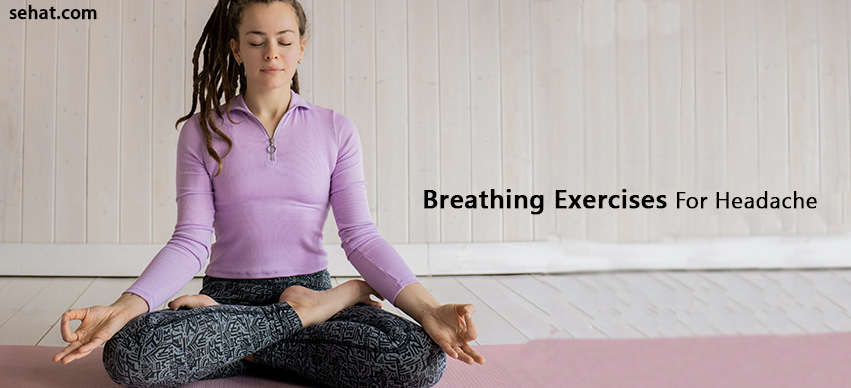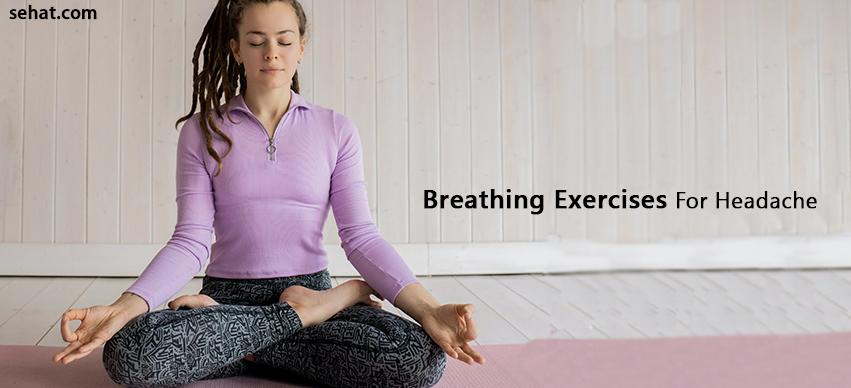Nanoparticle Therapy – An Emerging Cancer Treatment
5 Min Read


A headache is one of the common conditions that most people experience in their life. A headache causes pain and discomfort in your head, scalp, or neck. Headaches can be throbbing, sharp, constant, or dull and can range from mild to severe. Severe headaches can even cause difficulties in performing day-to-day activities.
There are natural therapies such as breathing exercises for headaches that can help you deal with the problem permanently.
A headache is generally a sign of stress and/or emotional distress. It can also result from high blood pressure, anxiety, depression, or migraine. In very few cases, headaches may signal a more serious health condition that requires immediate medical care.
[Also Read: Natural remedies for anxiety]
Based on the causes, headaches can be classified into two types;
Primary headaches include;
Secondary headaches are symptoms of an underlying medical condition such as;
Common causes of a headache include;
General illness includes infections, cold, flu, or fever.
Such as sinusitis, a throat infection, or an ear infection can cause headaches.
Emotional stress and/or depression. Alcohol intake, skipping meals, overuse of medications, changes in sleeping patterns, and neck or back strain because of poor posture can also cause headaches.
Your surroundings that can cause a headache may include second and tobacco smoke, strong odors from perfumes/household chemicals, and certain foods. Weather changes, pollution, loud noises, and bright lighting can also trigger headaches.
Headaches, especially migraine, runs in families. Individuals with a family history of headaches are at an increased risk of developing a migraine.
Breathing exercises can be a key part of headache treatment. They provide beneficial effects on your body by calming and controlling your stress levels.
Breathing exercises relax the body, mind, and soul, and work wonders in easing headache. They are considered very safe to get relief from headaches, especially tension headaches or migraines.
The right breathing helps to keep headaches at bay.
Breathing techniques have the power to heal and provide an ideal solution for headaches. By being conscious and controlling breath, you can keep yourself safe from many ailments.
When the right amount of oxygen is inhaled, it aids adequate blood flow, calms you down, and helps the body to work on your headache. This can be achieved by breathing from the belly that helps relax and cure your headache.
Here are some breathing exercises;
Avoid short and rapid breaths. Consider taking deep breaths up to a count of 10 while you inhale (let the air in) and another 10 while you exhale (let the air out) to have breaths longer than usual. Follow this rhythmic deep, slow breathing and observe your body's response, it will bring about relaxation of your nerves and decrease the intensity of the headache.
This is an amazing breathing exercise for easing headaches.
This technique of inhaling and exhaling for a while makes you get rid of the headache.
This involves a combination of breathing and pictures in your mind.
Repeat a couple of times for a headache to disappear.
In a comfortable and positive space, consider playing soothing music while doing deep and focused breathing. Choose music that lifts your mood. The music helps you to calm down, relaxes your muscles, energizes your body, and eases your headache.
This technique known as Nadi Shodhana is pranayama for headaches that involve breathing in and out through alternate nostrils. This is a good and famous practice that helps in the overall relaxation of your body. Inhale through your left nostril while closing the right nostril, and exhale through your right nostril while closing the left nostril. Repeat the practice several times to treat your headache.
Steps for 1 cycle of Nadi Shodhana;
This technique comprises a three-part process of breathing. It involves sitting in the Vajrasana position (kneeling and then sitting back on your legs to remove weight off your knees).
The three paces of breathing are;
A brief session of Sudarshan kriya would take about 45 minutes.
Involves a rapid series of inhalations and exhalations. The process involves 10 rapid breaths comprising 5 inhalations and 5 exhalations followed by one long breath.
Repeat the technique for at least 5 minutes to rejuvenate your mind and ease the headache.
Breathing exercises for headaches must be practiced properly and regularly for effective results.